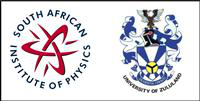Speaker
Abstract content <br> (Max 300 words)
Elemental abundances of metals in photoionized nebulae can be determined using two different kinds of spectral emission lines, namely optical recombination lines (ORLs) and collisionally excited lines (CELs). However, there exists a significant discrepancy between abundances determined using these two methods and this problem in astrophysics has been recognised for almost four decades. Many suggestions have been put forward to resolve this issue, but thus far no convincing solution has been proposed. In this talk I will review the different physical mechanisms involved in producing the emission lines and describe models used to derive the elemental abundances in nebulae. A discussion of the present status of this conundrum is presented.
Level for award<br> (Hons, MSc, <br> PhD)?
PhD
Would you like to <br> submit a short paper <br> for the Conference <br> Proceedings (Yes / No)?
Yes
Apply to be<br> considered for a student <br> award (Yes / No)?
Yes
Main supervisor (name and email)<br>and his / her institution
DP Smits, smitsdp@unisa.ac.za, Unisa

